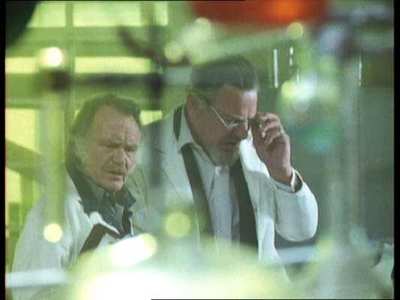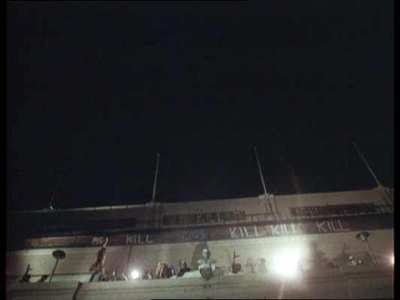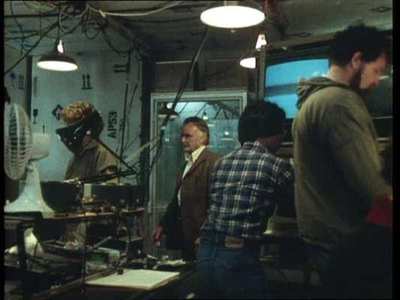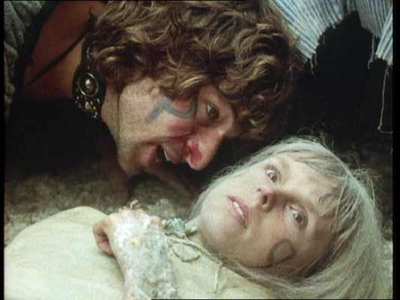Review of Quatermass: Chapters 1 To 4 / The Conclusion (Box Set)
Introduction
Back in the 1950`s (which was, believe it or not, before my time), the adventures of Professor Bernard Quatermass kept the nation either on the edge of its seat or cowering behind the settee. He was a prototype Doctor Who of sorts - home grown, but facing alien menaces a good ten years before Sydney Newman`s time lord came on the scene. In charge of Britain`s space effort (back in the days when we made one about extraterrestrial matters), Quatermass put a man in space four years before the Russians. Admittedly he brought back two corpses and a man-eating interstellar cactus, but you can`t hold that against him. Then he thwarted a plan to invade the earth using plans he had drawn up to colonise Mars. Finally he took on the Devil - in the form of a bunch of long-dead Martian colonisers who had crash-landed in prehistoric London while seeding the Earth with genetically modified cavemen. Of these original adventures, only a few episodes of the first two stories and the last adventure survive. Hammer Films made big screen adaptations of all three stories, but they don`t have the creepy atmosphere of the BBC originals.
Then in 1979, Thames Television`s film-making arm Euston Films (makers of "The Sweeney" among others) commissioned a four-part Quatermass adventure from Nigel Kneale. The result, while thought post-apocalyptic at the time, was a pretty accurate portrayal of life during the 1980`s. Sorry. Being a bit political and cynical there. It`s just seeing scenes of social collapse, anarchy, the rise of a new hippie-style movement, police corruption and the Government operating out of bunkers. It all seems kind of familiar...
John Mills plays the final incarnation of Professor Quatermass, a disillusioned old scientist brought out of retirement to act as a telepundit on the tv coverage of a US-Soviet joint space effort (this was the depths of the Cold War, remember?) When the astronauts are killed, Quatermass finds himself embroiled in an alien plot to harvest earthpeople (in the form of the New Age "Planet People").
This is science fiction hokum at its best. Considering the modest budget for the project, Euston Films was at the height of its creative drive and some scenes are nothing short of haunting. Nigel Kneale rounds off his Quatermass canon with a story that is as bleak as the time it was written in. The cast is, of course exemplary with John Mills given stalwart support from Simon MacCorkindale, Margaret Tyzack, Barbara Kellerman and a whole host of familiar faces. A pre-"Chinese Detective" David Yip and a very young Brenda Fricker (Casualty) appear in bit parts.
The four original episodes from 1979 are divided between the first two discs, while the third "The Quatermass Conclusion" offers the theatrical edit of the story which discards about half the footage and utilises some alternative scenes to tell the same story.

Video
Clearvision has not been provided with the best source material for any of this release, least of all the theatrical cut. According to sources in the know, the series was shot on 35mm but the master used for this release is a videotape taken from a 16mm print. The quality of this master is acceptable but not pretty, suffering from print weave, and some quite bad wear and tear. The image, presented in the 4:3 format of the original transmission, is quite sharp and colourful in spite of this and shows there could have been the potential of a genuinely striking restoration. Some video effects used to colour the sky in sequences are a little clumsy, but only reflect the limited technological resources available to UK television of that era.
The theatrical edit is in very shaky condition, adding video artefacts and an even dodgier print to its woes. Having said that, the movie version cuts a lot of material from the storyline without impairing the narrative - in fact, the movie version is a lot tauter as a piece of storytelling and alternative versions of some scenes are in fact an improvement.
The whole enterprise was shot on Panavision equipment, but whether this means the image was shot for widescreen presentation originally is a moot point. Both the serial and the movie are shown 4:3, although there is what *could* be a motorised pan and scan move towards the end of both presentations (where the boffins are putting together the final showdown).

Audio
Only mono. It is `seventies television after all.

Features
Production notes detailing the history of the storyline - which turns out to have dated back to the 1960s in one form or another. There is also a marvellous 18 minute interview Nigel Kneale (so that`s what he looks like!) gave to the Sci-fi Channel. The presentation is in the modern fashion for making professional work look shoddy and unprofessional, but much of what Mr Kneale has to say makes up for the shortcomings of his interviewer. He found the name Quatermass in the phone book. They were East End fruiterers.

Conclusion
Your typical bleak, post-apocalyptic view of British life in the 21st Century. This was haunting stuff on its original outing, and still packs a punch twenty-four years later. It didn`t quite have the everybody-talking-about-it-the-next-day impact of the classic Quatermass adventures, but it showed the old boy had some mileage left in him.
Clearvision are to be congratulated for bringing a lot of material that has been buried in the Thames vault out for an airing. It`s just a shame that the owners of the Thames Library haven`t taken their back catalogue`s care seriously in the past. What we need to see is Fremantlemedia giving the kind of TLC to grand old programmes that Carlton is giving the ITC library.
Your Opinions and Comments
Be the first to post a comment!